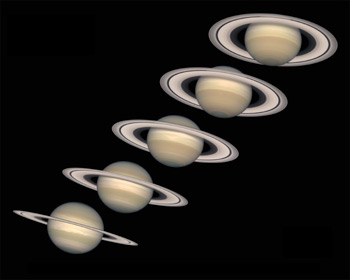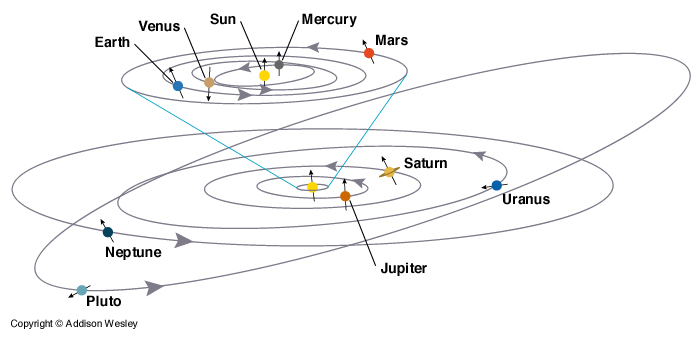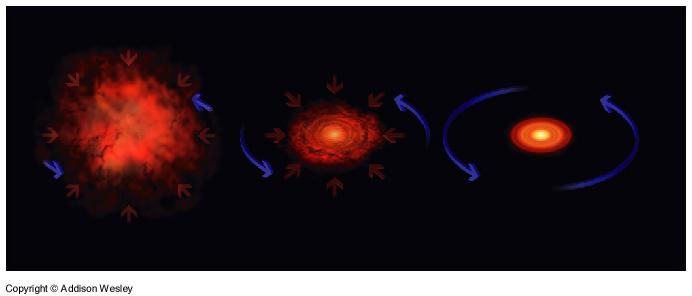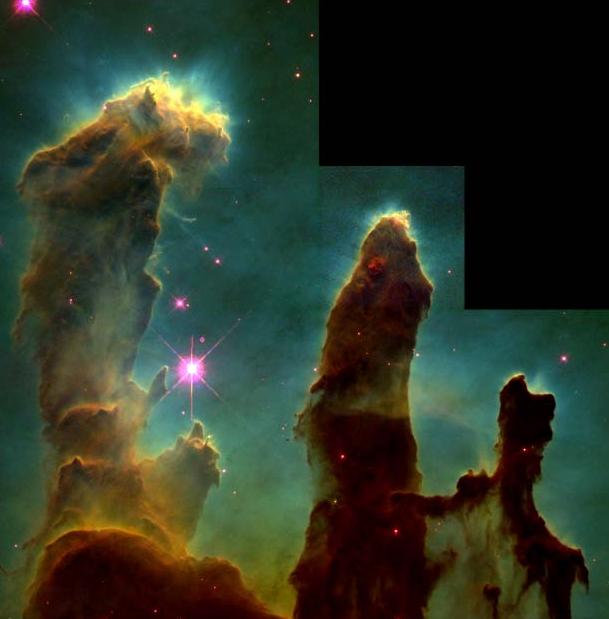 |
Stars are born in the dusty gas clouds. Driven by gravity, denser
parts of the cloud collapses further to form "cores". The picture
shown on the left is a false color HST image of a Galactic nebula
called M16.
|
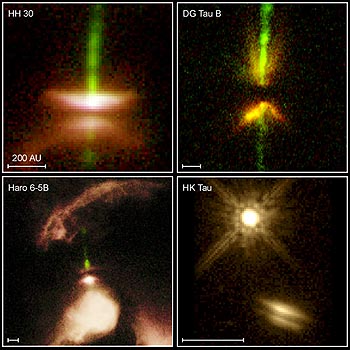 |
As the gas core collapses on itself due to its own weight,
a disk of gas and dust is formed. Gas and dust falls in so
quickly with so much energy that sometimes a jet of material
is seen being shot out. (Pictures shown on the left are false
color HST images of nearby young stellar systems.)
|
 |
Sometimes strong winds and shocks from the nearby young stars
can "blow out" the dusty cover of the young solar systems
and reveal the remnants of the forming solar system.
(Pictures shown on the left are false
color HST images of young stellar systems being revealed
by the ionizing radiation of the luminous neighboring young stars in
Orion Nebula.)
|
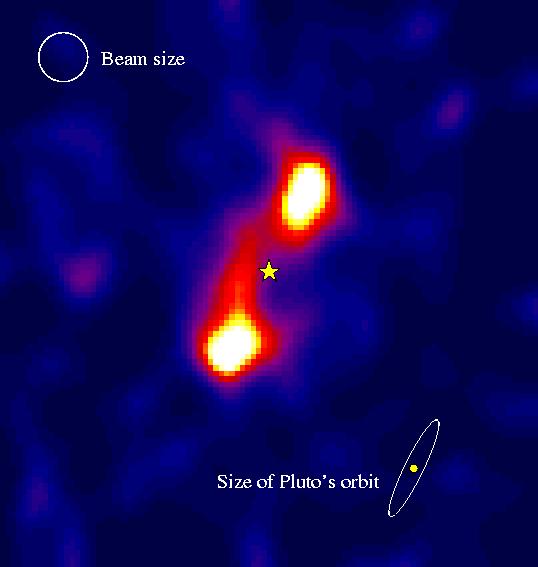 |
When the solar system is finally formed and dust has cleared,
remnants of the formation process and outlying material in the
solar systems (such as "Kuiper belt objects" and "Oort clouds")
can be found surrounding the systems. (Picture shown on the left
is a false color image of a dusty disk seen around a nearby
star named Fomalhaut, imaged in submm/infrared light at
James Clark Maxwell Telescope on Mauna Kea, Hawaii.)
|
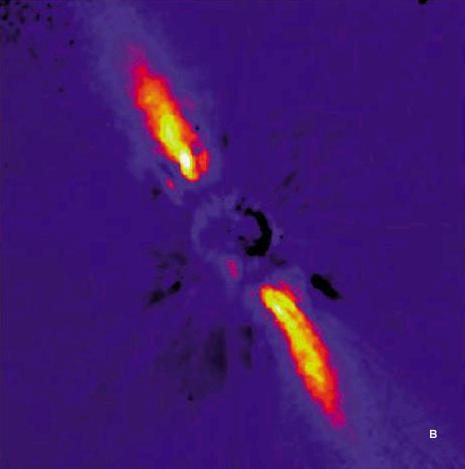 |
Remnants of the solar system formation can also be seen
in visible or infrared light around some of the nearest stars
when the bright light from the central star can be blocked out.
(Picture shown on the left
is a false color image of a dusty disk (rocks and ice chunks?)
seen around a nearby
star named beta Pictoris, imaged at European Southern Observatory.)
|
